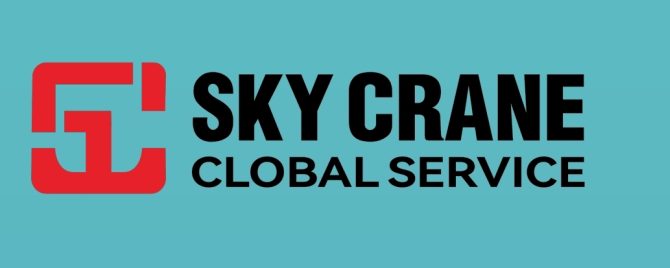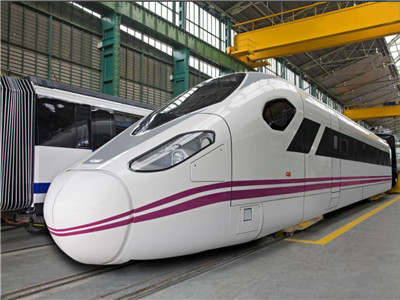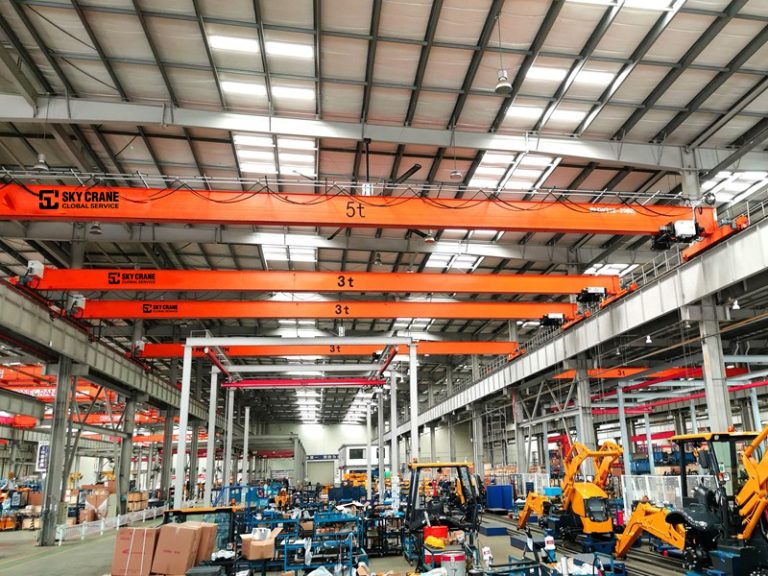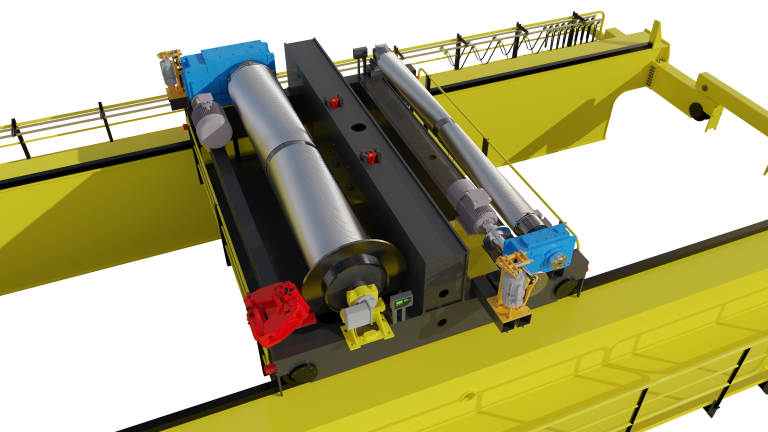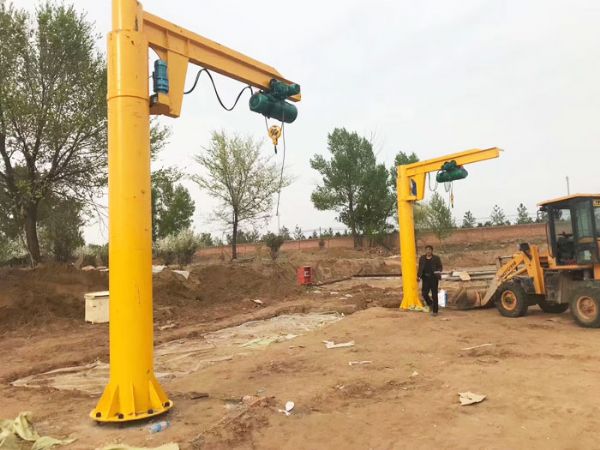Table of Contents
फ्याक्ट्री सञ्चालनका लागि उच्च-गुणस्तर लिफ्टिङ उपकरणमा लगानी गर्ने फाइदाहरू
उत्पादनको द्रुत-गतिको संसारमा, दक्षता र सुरक्षा सर्वोपरि छन्। यी दुवै लक्ष्यहरू प्राप्त गर्ने एउटा तरिका भनेको कारखाना सञ्चालनका लागि उच्च गुणस्तरको लिफ्टिङ उपकरणमा लगानी गर्नु हो। लिफ्टिङ उपकरणले कारखानाको दिनहुँ सञ्चालनमा महत्त्वपूर्ण भूमिका खेल्छ, भारी सामग्री र उत्पादनहरू सजिलैसँग सार्न मद्दत गर्दछ। तपाईंको लिफ्टिङ उपकरणको आवश्यकताको लागि सही आपूर्तिकर्ता छनोट गरेर, तपाईंले आफ्नो कारखाना सहज र प्रभावकारी रूपमा चलेको सुनिश्चित गर्न सक्नुहुन्छ। सही उपकरणको साथमा, कामदारहरूले भारी सामग्रीहरू छिटो र सुरक्षित रूपमा सार्न सक्छन्, यसले कार्यहरू पूरा गर्न लाग्ने समयलाई कम गर्दछ। यसले दक्षतामा मात्र सुधार गर्दैन तर छोटो समयमा थप काम गर्न अनुमति दिन्छ। भरपर्दो र टिकाउ लिफ्टिङ उपकरणहरूमा लगानी गरेर, तपाईंले डाउनटाइम कम गर्न सक्नुहुन्छ र आफ्नो कारखानालाई सहज रूपमा चलाउन सक्नुहुन्छ। भारी सामाग्री संग काम खतरनाक हुन सक्छ, तर ठाउँ मा सही उपकरण संग, दुर्घटना र चोटपटक को जोखिम धेरै कम हुन्छ। उच्च-गुणस्तर लिफ्टिङ उपकरणहरू कडा सुरक्षा मापदण्डहरू पूरा गर्न डिजाइन गरिएको छ, सुनिश्चित गर्दै कि कामदारहरूले आफैलाई जोखिममा नराखी सामग्री सार्न सक्छन्। सुरक्षालाई ध्यानमा राखेर बनाइएको उपकरणहरूमा लगानी गरेर, तपाईंले आफ्ना कर्मचारीहरूका लागि सुरक्षित कार्य वातावरण सिर्जना गर्न सक्नुहुन्छ। आफ्नो कारखाना। उद्योग मापदण्डहरू पूरा गर्ने भरपर्दो र टिकाउ उपकरणहरू उपलब्ध गराउने प्रतिष्ठा भएको आपूर्तिकर्ता खोज्नुहोस्। एक सम्मानित आपूर्तिकर्ताले तपाईंको विशिष्ट आवश्यकताहरू अनुरूप लिफ्टिङ उपकरण विकल्पहरूको दायरा पनि प्रस्ताव गर्नेछ, चाहे तपाईंलाई ओभरहेड क्रेनहरू, फहराईहरू, वा लिफ्ट टेबलहरू चाहिन्छ। एक विश्वसनीय आपूर्तिकर्तासँग काम गरेर, तपाईं आफ्नो कारखाना सञ्चालनका लागि उत्तम उपकरणहरू प्राप्त गर्दै हुनुहुन्छ भन्ने कुरामा विश्वस्त हुन सक्नुहुन्छ। । लिफ्टिङ उपकरण खरिदको प्रारम्भिक लागत उच्च लाग्न सक्छ, तर दीर्घकालीन लाभहरू अग्रिम लगानी भन्दा धेरै छन्। उपकरणहरू छनोट गरेर जुन लामो समयसम्म बनाइएको छ, तपाईं महँगो मर्मत र लाइनमा प्रतिस्थापनबाट बच्न सक्नुहुन्छ। उच्च-गुणस्तर लिफ्टिङ उपकरणहरू दैनिक प्रयोगको कठोरताहरू सामना गर्न डिजाइन गरिएको छ, तपाइँ तपाइँको लगानीबाट अधिकतम लाभ उठाउन सुनिश्चित गर्दै। विभिन्न तरिकाहरू। बढ्दो उत्पादकता र सुधारिएको सुरक्षादेखि दीर्घकालीन लागत बचतसम्म, सही उपकरण छनोटका फाइदाहरू स्पष्ट छन्। एक सम्मानित आपूर्तिकर्तासँग काम गरेर र तपाइँको विशेष आवश्यकताहरू पूरा गर्ने उपकरणहरू चयन गरेर, तपाइँ तपाइँको कारखाना सहज र कुशलतापूर्वक चल्छ भनेर सुनिश्चित गर्न सक्नुहुन्छ। उच्च-गुणस्तरको लिफ्टिङ उपकरणमा आज लगानी गर्नुहोस् र यसले तपाईंको सञ्चालनमा ल्याउन सक्ने भिन्नता हेर्नुहोस्।
तपाइँको कारखाना आवश्यकताहरूको लागि दायाँ लिफ्टिङ उपकरण आपूर्तिकर्ता कसरी छनौट गर्ने
सिरियल नम्बर
| लेखको नाम | 5~400T नयाँ-प्रकार ओभरहेड क्रेन हुकसँग |
| 1 | रेल – माउन्ट गरिएको ग्यान्ट्री क्रेन |
| 2 | युरोपेली शैली क्रेन |
| 3 | हार्बर क्रेन |
| 4 | कारखानामा लिफ्टिङ उपकरण प्रयोग गर्नका लागि सामान्य सुरक्षा अभ्यास र नियमहरू |
OSHA नियमहरू, व्यावसायिक सुरक्षा र स्वास्थ्य प्रशासन द्वारा निर्धारित, कार्यस्थलमा लिफ्टिंग उपकरणको सुरक्षित प्रयोगको लागि विशेष आवश्यकताहरू रूपरेखा। यी नियमहरूले उपकरण डिजाइन र निर्माण, अपरेटर प्रशिक्षण र प्रमाणीकरण, र उचित मर्मत र निरीक्षण प्रक्रियाहरू सहित विषयहरूको विस्तृत दायरा समेट्छ। OSHA नियमहरू पछ्याएर, कारखानाहरूले उनीहरूका कर्मचारीहरूलाई सुरक्षित काम गर्ने वातावरण प्रदान गर्दै र दुर्घटना र चोटपटकको जोखिम कम गर्न सुनिश्चित गर्न सक्छन्। ANSI मापदण्डहरू अमेरिकी राष्ट्रिय मानक संस्थान द्वारा विकसित गरिएको छ र लिफ्टिङ उपकरणको डिजाइन, निर्माण र सञ्चालनको लागि दिशानिर्देशहरू प्रदान गर्दछ। ANSI मापदण्डहरू पछ्याएर, कारखानाहरूले उनीहरूको उपकरणहरू उद्योगका उत्कृष्ट अभ्यासहरू पूरा गर्दछ र कार्यस्थलमा प्रयोग गर्न सुरक्षित छ भनी सुनिश्चित गर्न सक्छन्। यी दिशानिर्देशहरू उपकरणहरू सुरक्षित र प्रभावकारी रूपमा प्रयोग भएको सुनिश्चित गर्न डिजाइन गरिएको हो, र तिनीहरूलाई पालना गर्न असफल हुँदा उपकरण क्षति, दुर्घटना, र चोटपटक हुन सक्छ। निर्माताको दिशानिर्देशहरू पालना गरेर, कारखानाहरूले तिनीहरूको उपकरणको आयु लम्ब्याउन र कार्यस्थलमा दुर्घटनाहरूको जोखिम कम गर्न सक्छ। र मापदण्डहरू। यी सुरक्षा अभ्यासहरू पछ्याएर, कारखानाहरूले तिनीहरूका कामदारहरूको सुरक्षा र तिनीहरूको उपकरणको अखण्डता सुनिश्चित गर्न सक्छन्, कार्यस्थलमा दुर्घटना र चोटपटकको जोखिम कम गर्न सक्छन्।
Common Safety Practices and Regulations for Using Lifting Equipment in Factories
Lifting equipment plays a crucial role in the day-to-day operations of factories, allowing for the safe and efficient movement of heavy materials and products. However, the use of lifting equipment also comes with inherent risks that must be carefully managed to ensure the safety of workers and the integrity of the equipment. In this article, we will discuss some common safety practices and regulations that should be followed when using lifting equipment in factories.
One of the most important safety practices when using lifting equipment in factories is to ensure that all equipment is properly maintained and inspected on a regular basis. This includes checking for any signs of wear and tear, ensuring that all safety features are in working order, and following the manufacturer’s recommended maintenance schedule. Regular inspections can help to identify potential issues before they become serious safety hazards, reducing the risk of accidents and injuries in the workplace.
Another key safety practice when using lifting equipment in factories is to ensure that all operators are properly trained and certified to use the equipment. This includes providing comprehensive training on how to operate the equipment safely, as well as instruction on how to recognize and respond to potential hazards. By ensuring that all operators are properly trained, factories can reduce the risk of accidents and injuries caused by operator error.
In addition to proper maintenance and training, factories must also comply with a number of regulations and standards when using lifting equipment. These regulations are designed to ensure the safety of workers and the integrity of the equipment, and failure to comply with them can result in fines, penalties, and even legal action. Some common regulations that factories must adhere to when using lifting equipment include OSHA regulations, ANSI standards, and manufacturer guidelines.

OSHA regulations, set forth by the Occupational Safety and Health Administration, outline specific requirements for the safe use of lifting equipment in the workplace. These regulations cover a wide range of topics, including equipment design and construction, operator training and certification, and proper maintenance and inspection procedures. By following OSHA regulations, factories can ensure that they are providing a safe working environment for their employees and reducing the risk of accidents and injuries.
In addition to OSHA regulations, factories must also comply with ANSI standards when using lifting equipment. ANSI standards are developed by the American National Standards Institute and provide guidelines for the design, construction, and operation of lifting equipment. By following ANSI standards, factories can ensure that their equipment meets industry best practices and is safe to use in the workplace.
Finally, factories must also follow the guidelines set forth by the equipment manufacturer when using lifting equipment. These guidelines are designed to ensure that the equipment is used in a safe and efficient manner, and failure to follow them can result in equipment damage, accidents, and injuries. By following the manufacturer’s guidelines, factories can prolong the life of their equipment and reduce the risk of accidents in the workplace.
In conclusion, the safe use of lifting equipment in factories requires a combination of proper maintenance, training, and compliance with regulations and standards. By following these safety practices, factories can ensure the safety of their workers and the integrity of their equipment, reducing the risk of accidents and injuries in the workplace.
